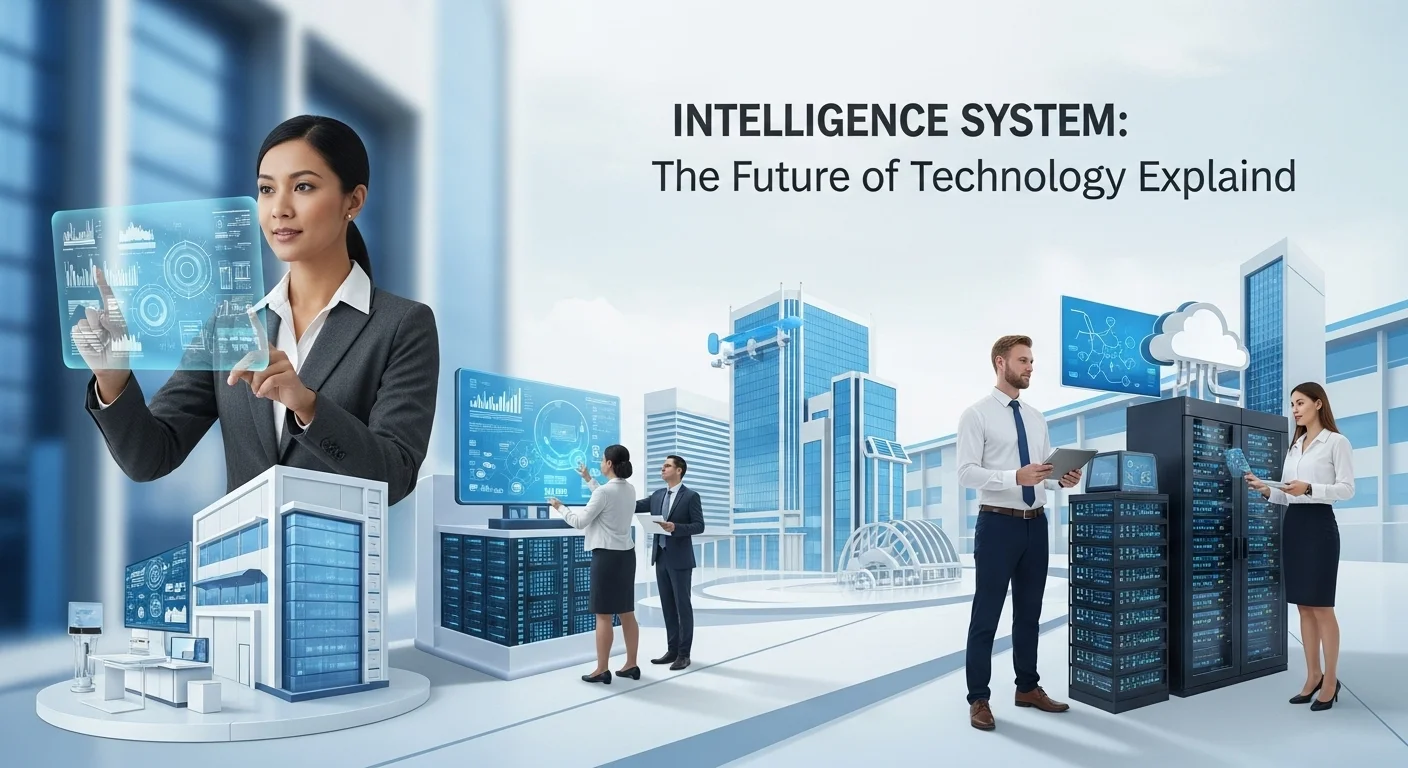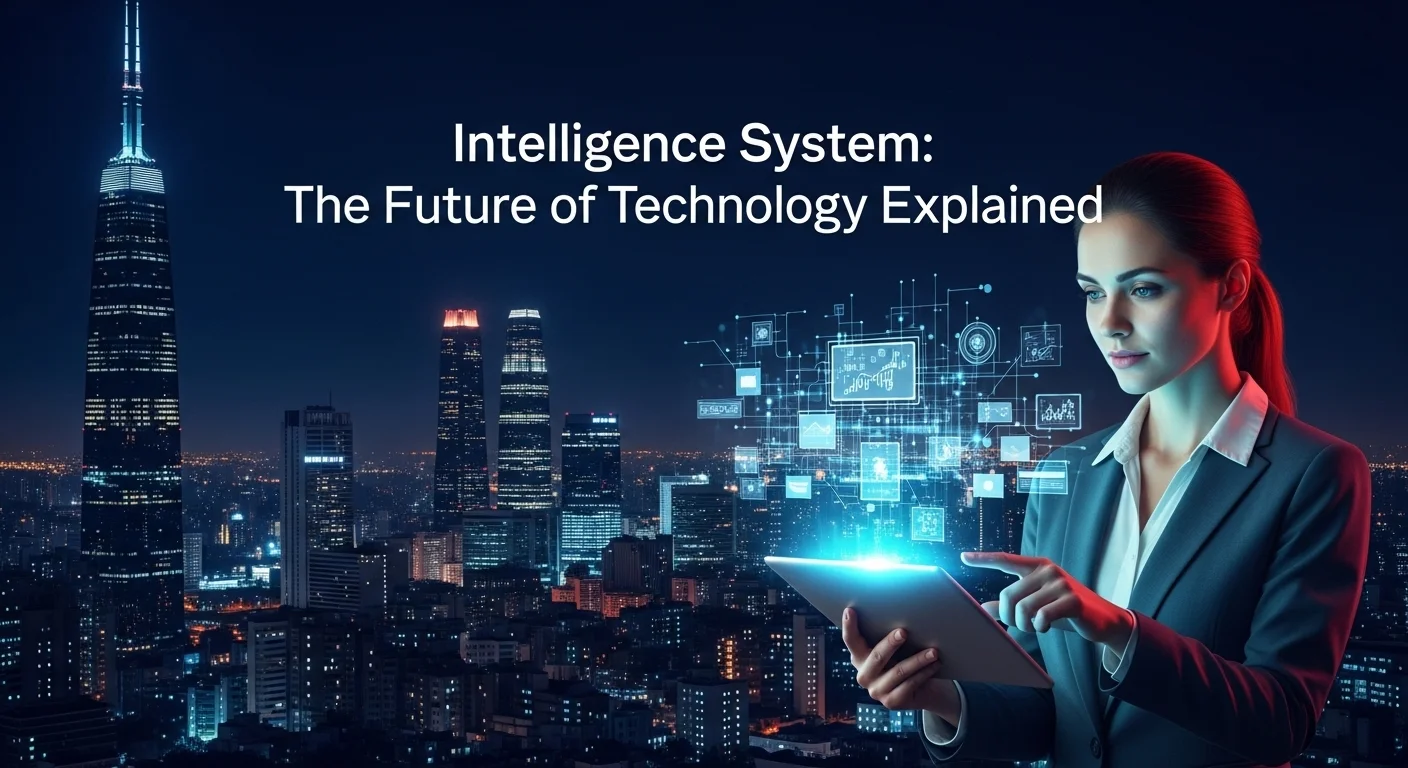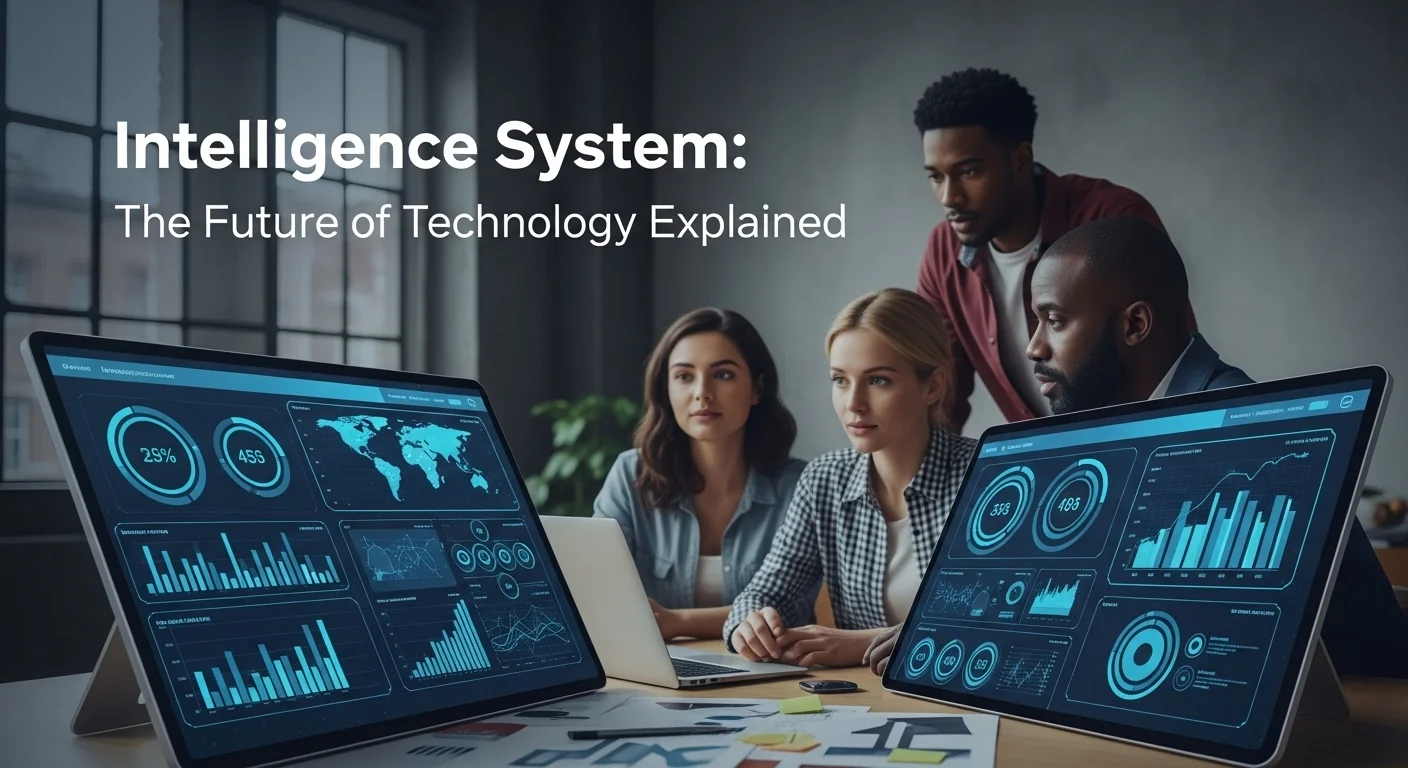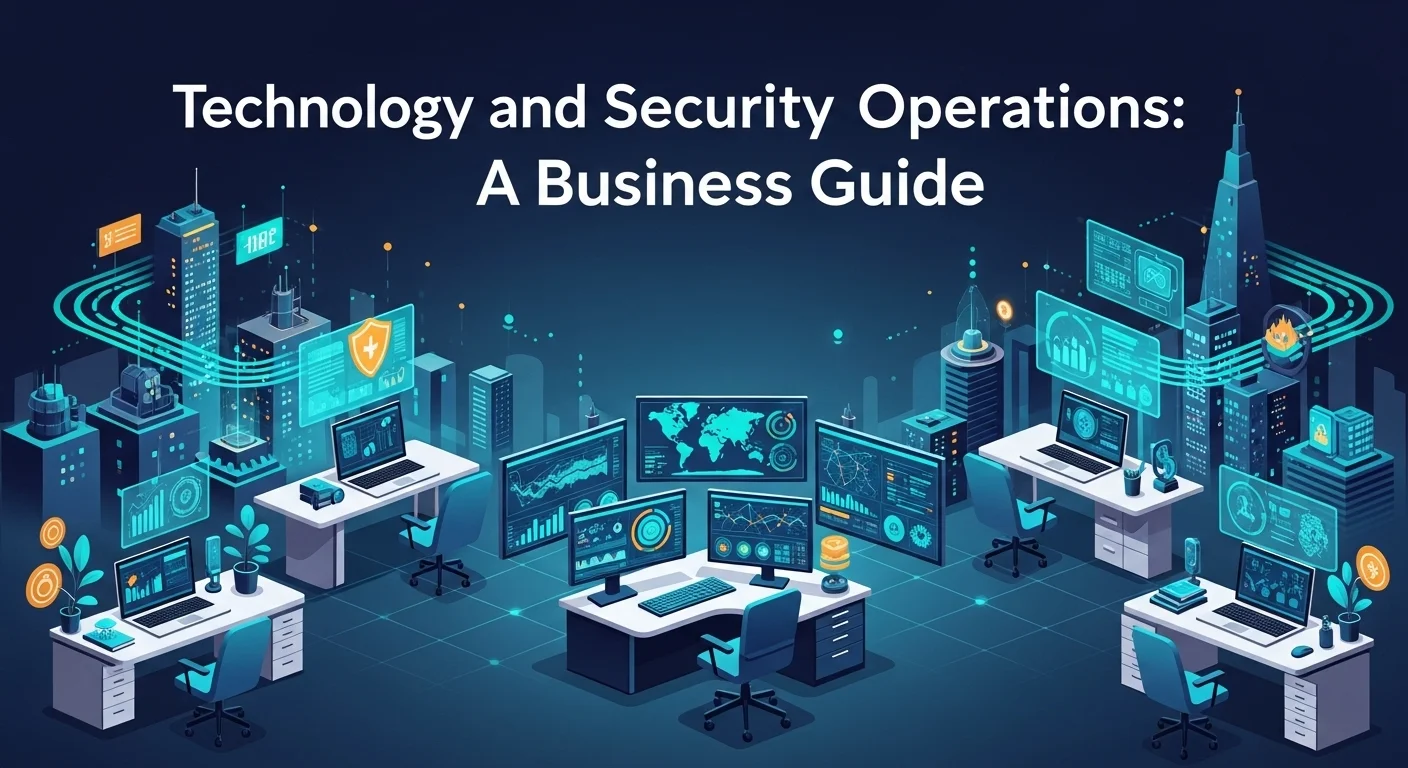What Are Intelligence Systems? A Practical Guide for Business and Home

Executive Summary
In my line of work, I see a lot of tech jargon get thrown around. 'Intelligence System' is one of those terms that sounds complex, but the idea behind it is revolutionizing everything from how a business operates to how we live our lives. This article is my attempt to cut through the noise. We'll break down what these systems actually are, looking at the AI and machine learning that power them. We'll explore real-world examples, from sophisticated cyber threat intelligence that keeps companies safe to the smart home systems that bring convenience and security to your front door. You'll get a clear picture of how business intelligence platforms help leaders make smarter decisions and how a connected network of alarms and security devices can protect your family. This is your straightforward guide to understanding the real-world power and future of intelligent systems, both at work and at home.
Table of Contents
Table of Contents
- What is an Intelligence System and Why is it So Important?
- The Critical Role in Cybersecurity
- Intelligence in the Home: A New Era of Living
What is an Intelligence System and Why is it So Important?
In the world of tech, we're constantly searching for the next big thing. For a while now, that thing has been the 'Intelligence System.' It’s a term that has fundamentally changed how we approach business and our daily routines. So, what is it? Simply put, an intelligence system is a smart framework that uses Artificial Intelligence (AI) to do more than just collect data—it understands it. These systems are designed to gather, analyze, and act on information to achieve a goal. Their importance can't be overstated; we're moving away from simply reacting to problems and toward predicting and automating the solutions. Think of AI as the 'brain' that does the learning and reasoning, while the system is the 'body' that handles the data and takes action. This partnership allows us to tackle incredibly complex challenges, from spotting subtle market shifts to stopping cyberattacks before they happen or even just making your home run more smoothly.
I've seen the applications of these systems spread into almost every corner of technology. In the corporate world, Business Intelligence (BI) platforms are no longer a luxury; they're essential. They pull data from every department—sales, marketing, operations—and turn messy spreadsheets into clear, visual reports. This allows leaders to stop guessing and start making strategic decisions based on hard evidence. I remember working with a retail client who used their BI system to analyze buying habits. They optimized their stock, ensuring hot items were always available and avoiding costly overstock. It’s this data-driven approach that boosts profits and gives companies a real edge. Now, these platforms are even smarter, using AI to point out important trends and insights automatically, so you don't need to be a data scientist to understand what your business is telling you. This makes smart decision-making a part of everyone's job.
The Critical Role in Cybersecurity
Nowhere is this technology more critical than in cybersecurity. I've spent years watching digital threats evolve, and a cyber threat intelligence system (CTI) is our best defense. In an age of automated and sophisticated attacks, old-school security just doesn't cut it. A CTI platform is always working, collecting data on new threats, hackers, and their methods from countless sources, including the dark web and security forums. It then turns all that raw data into clear, actionable intelligence. With this information, security teams can proactively patch vulnerabilities and hunt for signs of a breach before an attack even begins. For instance, if the system learns about a new ransomware targeting your industry, it can automatically update your firewalls to block it. This proactive approach is a total game-changer, shifting security from a reactive defense to a predictive shield, which is absolutely vital for protecting a company's sensitive data and keeping the lights on.
Intelligence in the Home: A New Era of Living
The magic of intelligence systems isn't just for big business; it's transforming our homes. The 'smart home' concept has grown into what I call a home intelligence system. This isn't just a handful of gadgets; it's a unified network of devices that learns your habits and adapts to your lifestyle. The real goal here is to make your living space more comfortable, convenient, and secure. A central hub, like a smart speaker, acts as the conductor, making sure all your devices work in harmony. The 'intelligence' part is its ability to create automated routines. For example, my 'good morning' routine is triggered by my alarm. The blinds slowly open, the lights fade on, the coffee maker starts brewing, and the thermostat adjusts to the perfect temperature. It’s this kind of automation that simplifies my day and makes my home feel truly seamless.
Of course, security is a huge part of this. An intelligent home security system offers so much more than a loud siren. These modern setups use AI to tell the difference between a person, a package, or a passing car, which drastically cuts down on false alarms from things like pets or wind. An intelligent home alarm system can be controlled from your phone, and it learns your family's daily rhythms. If it detects something odd, like a door opening in the middle of the night, it does more than just sound an alarm. It can flash all the lights, send a live video from your cameras to your phone, and give you a one-tap option to call for help. This provides not just a stronger deterrent but incredible peace of mind, whether I'm home or halfway around the world.
Tying it all together is the overarching intelligent home automation system. This is the master controller ensuring everything works together. It's the logic that tells the lights what to do when the security system is armed. For example, when I set my security to 'away,' the automation system knows to turn off unnecessary lights and lower the heat to save energy. It can even run a 'vacation' mode, turning lights on and off randomly to make it look like someone's home. The power here is creating smart 'if-then' scenarios. If a smoke detector goes off, the system can unlock the doors for an easy escape, shut down the air conditioning to stop smoke from spreading, and flash the outdoor lights to guide firefighters. It's this beautiful integration of digital and physical safety that shows just how deeply intelligence systems have improved our modern world.

A Complete Guide to Intelligence Systems in Tech and Business
Whether you're looking to implement an intelligence system for a global company or just for your own home, it helps to understand the moving parts. From my experience, every one of these systems, no matter its purpose, follows the same fundamental lifecycle: it ingests data, processes it, analyzes it, and then acts on it. This cycle is what turns meaningless data into valuable intelligence. The first step, data ingestion, is all about collection. For a business intelligence (BI) tool, this means pulling in structured data from your sales software, semi-structured data from web logs, and even unstructured data like social media comments. For a cyber threat intelligence system, the sources are even more varied—we're talking dark web forums, decoy systems (honeypots), and global threat feeds. The challenge isn't just the amount of data, but how fast it comes in and in how many different formats.
Once the data is in, it needs to be processed. Raw data is almost always a mess—it's incomplete, inconsistent, and disorganized. This stage cleans, organizes, and enriches the data to prepare it for analysis. It's a critical step; as the old saying goes, 'garbage in, garbage out,' and it's never been truer than with these systems. The clean data is then stored in a central place, like a data warehouse or a more flexible data lake. This becomes the 'single source of truth' for all analysis. For example, a cyber threat intelligence system will connect the dots between different pieces of information—linking a malicious IP address to a specific type of malware and a known hacker group—creating a much richer picture of the threat than any single piece of data could.
The Analysis Engine and Business Solutions
The heart of any intelligence system is its analysis engine. This is where AI and machine learning models get to work, finding patterns, predicting what's next, and generating insights. In the business world, companies like Microsoft (with Power BI), Salesforce (with Tableau), and Qlik offer incredible BI platforms that are packed with analytical tools. I've helped businesses use these to go from basic questions like 'what happened?' to advanced ones like 'what will happen?' and even 'what should we do about it?' Resources like Gartner’s Magic Quadrant are fantastic for helping companies choose the right fit. The biggest trend I'm seeing is the rise of augmented analytics, where AI does the heavy lifting of finding insights for you, and you can ask questions in plain English. It makes data analysis accessible to everyone in the organization.
In cybersecurity, the analysis is all about spotting threats and assessing risk. A cyber threat intelligence system from providers like CrowdStrike or Mandiant uses machine learning to find unusual activity that could signal a breach. They study the Tactics, Techniques, and Procedures (TTPs) of hackers to predict their next move. These platforms connect directly with a company's existing security tools (like firewalls) to give real-time alerts and can even automatically take action, like isolating an infected computer from the network. The business value is crystal clear: a strong CTI platform dramatically cuts down the time it takes to stop a threat, which saves money and prevents damage. It's a non-negotiable investment for any company serious about protecting itself today.
Intelligence at Home: A Guide to Available Systems
On the consumer side, the home intelligence system has its own thriving ecosystem. The market is led by the big names: Amazon's Alexa, Google's Assistant, and Apple's HomeKit. I think of these platforms as the 'brain' of the smart home, providing the voice control and software to manage countless devices from different brands. Their biggest strength is compatibility, letting you mix and match your favorite smart lights, thermostats, and locks. For hobbyists like myself who want total control and customization, open-source platforms like Home Assistant are a dream. It lets you build a highly personalized intelligent home automation system on your own hardware, so you're not reliant on the cloud and can create incredibly detailed automations.
When building out a home intelligence system, security should be your first thought. A great intelligent home security system often starts with a kit from a company like SimpliSafe, Ring, or ADT. You can install them yourself or have a pro do it. What makes them 'intelligent' is how they connect to your other smart devices and use AI. For example, some systems use your phone's location (geofencing) to automatically arm themselves when you leave the house. Ring, being part of Amazon, works seamlessly with its video doorbells and cameras, letting you manage everything in one app. Many of these offer professional monitoring, where a team is on standby 24/7 to dispatch emergency services, giving you the same level of protection as traditional security companies. The best choice really depends on your budget, technical comfort, and which smart home family you're already in. An intelligent home automation system then becomes the final layer, using your security system's status to trigger other actions, fully blending security and convenience into one truly responsive home.

Tips and Strategies to Improve Your Technology Experience
Getting the most out of an intelligence system—whether for your business, cybersecurity, or home—is about more than just buying the latest tech. It's about being strategic. For businesses starting their data journey, my first piece of advice is always this: start with clear goals. Don't just aim to 'be data-driven.' Define specific problems. Do you want to reduce customer churn? Improve supply chain efficiency? Clear, measurable goals will focus your efforts. A critical best practice is to obsess over data quality from day one. An intelligence system is only as good as its data. Set up processes to clean and validate your information so you can trust the insights you get. Finally, build a culture of data literacy. Train your employees to use the tools and apply the insights in their day-to-day work. That's how you turn a powerful platform into real business value.
When it comes to a cyber threat intelligence system, your strategy must be proactive. My key tip here is to go beyond just reading threat reports. The real power of a CTI platform is its ability to put threats into the context of *your* organization. Your security team should use it to understand who is targeting your industry and where your specific vulnerabilities are. I always recommend integrating the CTI system deeply with your other security tools. This enables what we call Security Orchestration, Automation, and Response (SOAR), where the system can trigger defenses automatically. For example, it could spot a phishing campaign and automatically block the domain and remove the malicious email from all inboxes without anyone lifting a finger. And never forget the human element. Your employees are your first line of defense, so regular security training, informed by the latest threats your CTI system has identified, is priceless.
Optimizing Your Home Intelligence Experience
For your home, creating a truly helpful home intelligence system is a fun process of trial and error. My biggest tip is to think in routines and scenes, not just controlling one device at a time. Instead of turning on three different lamps, create a 'Movie Night' scene that dims all the lights, closes the blinds, and turns on the TV with a single command. A powerful strategy is to build automations with multiple triggers. For example: 'If it's after sunset AND the front door unlocks AND there's motion on the porch, then turn on the porch light.' This kind of smart logic is what turns a collection of gadgets into an intelligent home automation system.
When setting up your intelligent home security system, smart placement is everything. Put motion sensors in high-traffic areas and contact sensors on all ground-floor doors and windows. A pro tip for cameras: use privacy zones to black out areas you don't want recorded, like a neighbor's yard. And take the time to fine-tune motion sensitivity to avoid false alerts. For your intelligent home alarm system, use the 'Home' and 'Away' modes. 'Home' mode can keep the doors and windows armed while letting you move around inside. A crucial best practice for any smart home is to lock down your network security. Change default passwords, use a strong Wi-Fi password, enable WPA3 encryption, and set up a separate network for guests. This protects your data and keeps your devices from being compromised. For more on evolving threats, the Forbes analysis on cybersecurity trends offers great insights relevant to everyone. By following these strategies, you can transform these complex technologies into intuitive allies that genuinely improve your security, efficiency, and life.
Expert Reviews & Testimonials
Sarah Johnson, Business Owner ⭐⭐⭐
The information about Intelligence System is correct but I think they could add more practical examples for business owners like us.
Mike Chen, IT Consultant ⭐⭐⭐⭐
Useful article about Intelligence System. It helped me better understand the topic, although some concepts could be explained more simply.
Emma Davis, Tech Expert ⭐⭐⭐⭐⭐
Excellent article! Very comprehensive on Intelligence System. It helped me a lot for my specialization and I understood everything perfectly.



